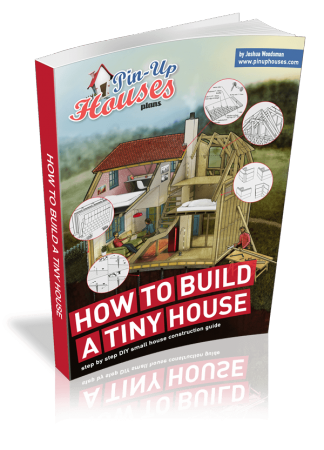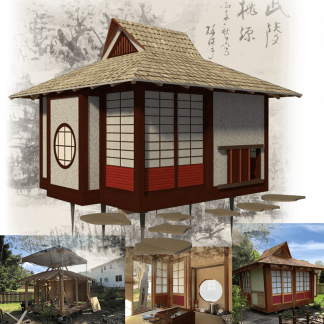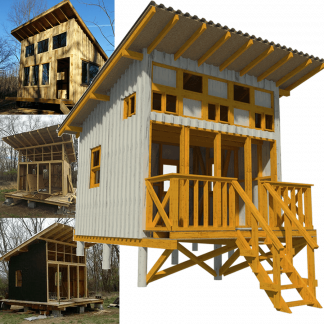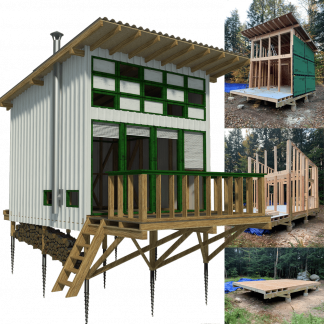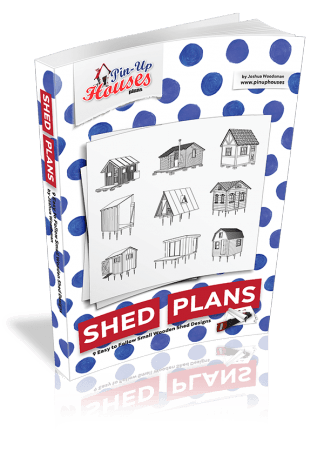There is something quietly revolutionary happening in the world of architecture: a growing number of people are trading in sprawling square footage for something smaller, simpler, and closer to nature.
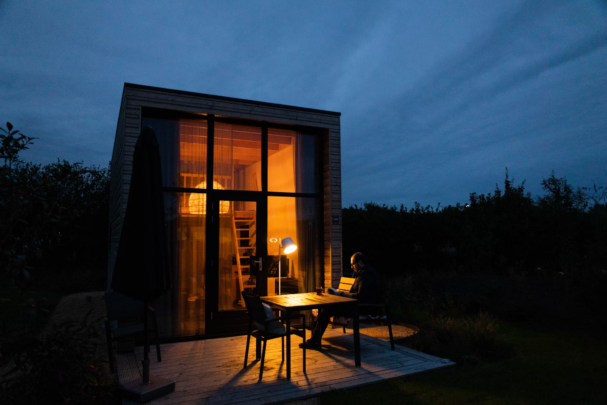
From off-grid cabins tucked into forests to mobile tiny homes on scenic plots, these minimalist abodes are rewriting the rules of modern living, and why not! These are not only less liabilities but also aesthetically more appealing with character driven living!
But just because the footprint is small doesn’t mean the design has to be. In fact, some of the most inspired interiors today are found in the tiniest of spaces, and artisan tiles are playing a starring role.
Why Artisan Tiles Resonate with Off-Grid Living
At its core, off-grid and tiny house living is about intention. Every material, every feature must be chosen thoughtfully. Artisan tiles, with their handcrafted charm and humanized imperfections, embody that very ethos. Unlike mass-produced options, artisan tiles offer texture, soul, and a kind of timeless artistry that factory lines simply can’t replicate.
Whether hand-glazed, painted, or made from local clay, these tiles often showcase cultural heritage and craftsmanship that resonate with dwellers who value authenticity and sustainability. For those building with their hands or sourcing materials mindfully, these tiles become more than decor—they’re part of a larger story of design integrity.
Tile in Tiny Kitchens: Functional Beauty
The kitchen is often the heart of a tiny house, and in many cases, it doubles or triples as dining space, prep area, and storage hub. This makes material choices all the more critical. Here, artisan tile backsplashes or open-shelf surrounds become not just aesthetic decisions but smart, durable solutions.
Glazed Moroccan zellige, for instance, with its natural variation and light-catching glaze, adds depth and movement in small areas. Similarly, handmade subway tiles in earthy hues can create a sense of groundedness and warmth in minimalist interiors.
Outdoor Transitions: From Porch to Pool
In off-grid settings, the line between indoors and outdoors is often blurred—intentionally so. Patios, porches, and small plunge pools are frequently part of the design to extend livable space. This is where material resilience becomes key, and artisan tiles deliver.
For example, Outercle’s pool tile designs for outdoors strike a perfect balance between aesthetic charm and heavy-duty performance. Their handcrafted appearance and slip-resistant surfaces make them ideal for off-grid homes that prioritize both form and function.
Whether lining a soak tub, edging a stone patio, or defining a rain-fed plunge pool, these tiles elevate the outdoor experience while withstanding the elements.
Bathroom Bliss: Compact Yet Custom
Bathrooms in tiny or off-grid homes are famously compact, but that doesn’t mean they should lack style. In fact, it’s the perfect place to indulge in detail. A small shower stall tiled with hand-painted Talavera or terracotta tiles can feel like a curated spa rather than a compromise.
Because surface area is limited, homeowners can splurge on a few square feet of high-quality tile without breaking the bank. This makes artisan tiles a realistic choice even for budget-conscious builds.
Hearth, Entry, and Accent: Surprising Places for Tile
One of the joys of working with artisan tiles is their versatility. Beyond kitchens and baths, they can be used around wood stoves, on stair risers, or even embedded into built-in furniture or outdoor patio transitions.
These small touches offer opportunities to inject personality into a build. They serve as visual pauses in otherwise clean, functional spaces, creating moments of reflection and artistic delight.
Sustainability and Longevity
Most people choosing an off-grid lifestyle are also thinking long-term. They’re opting out of the disposable mindset and moving toward permanence. Artisan tiles, with their slow-made nature, are inherently sustainable. Many are made using traditional techniques that require less energy and are sourced from local materials.
And then there’s longevity: these tiles are built to last. Unlike peel-and-stick solutions or synthetic materials that degrade quickly, artisan tiles age beautifully. Their character deepens with time, especially in environments with changing weather and natural light.
Design Tip: Let Tiles Lead the Color Story
Because space is limited in tiny homes, every visual element counts. Instead of using paint or large decor pieces, consider letting tile dictate the palette. A cool-toned ceramic backsplash can inspire textiles and cabinetry choices. A deep ochre mosaic in the bath might lead the tone for wooden shelves and mirrors.
By starting with artisan tiles as the anchor, you ensure cohesion throughout the home—a vital aspect in open-plan layouts.
A Marriage of Values
At the intersection of rustic living and refined design lies a philosophy that values story over trend, experience over excess. Artisan tiles embody that beautifully. They’re imperfect in the best way, thoughtful in their production, and enduring in their appeal and eco-friendly ways of living.
Whether you’re building a mobile A-frame, a solar-powered yurt, or a timber-clad tiny home, incorporating artisan tiles is a way to ground your design in authenticity while elevating its visual narrative.
In the end, it’s not just about making do with less. It’s about doing more with what you choose. And with artisan tiles, every inch becomes an opportunity to express, preserve, and inspire.


